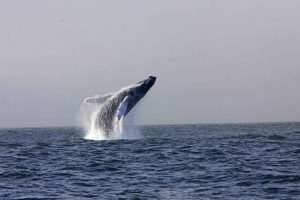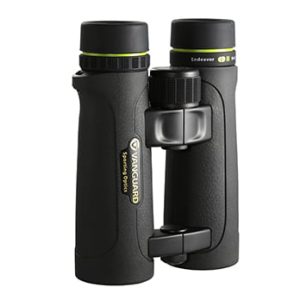 A few weeks ago the annual television wildlife extravaganza that is BBC Springwatch hit our screens. This three-week long wildlife-fest celebrated the best of native British wildlife, bringing fantastic shots, engaging stories and interesting wildlife facts to a public with a seemingly insatiable appetite for all things wild.
A few weeks ago the annual television wildlife extravaganza that is BBC Springwatch hit our screens. This three-week long wildlife-fest celebrated the best of native British wildlife, bringing fantastic shots, engaging stories and interesting wildlife facts to a public with a seemingly insatiable appetite for all things wild.
I look forward to Springwatch and Autumnwatch every year… but every time I switch it on I find myself asking the same question: why not here?
Ireland is woefully underserved when it comes to home-grown natural history programming. Irish wildlife programmes are few and far between, and for the life of me I can’t work out why.
It’s certainly not lack of talent. We may not have the resources of the BBC’s vaunted natural history unit at our disposal, but successful shows like Wild Trials, Living the Wild Life, Wild Journeys and The Eagle’s Return show that we certainly have the skills and the know-how to produce excellent natural history programmes here in Ireland.
I don’t think the argument that the audience isn’t there holds water any more either. People are increasingly looking for a respite from the frantic pace and commercial focus of modern life. More of us are looking to reconnect with nature, rediscover the world around us and discover more about the plants and animals we share this island with.
Couple that burgeoning curiosity with the live, anything-can-happen buzz of reality television and you have have all the ingredients for an innovative, engaging, entertaining and educational TV show. Add social media into the mix, and harness the potential to make live television instantly interactive, and you surely have a television hit on your hands.
So why isn’t it happening?
Lack of will and lack of vision is what it boils down to. Television’s top brass aren’t prepared to step out of their comfort zone and commission more Irish wildlife programming. Hiring Irish talent to deliver new and innovative Irish television is a high risk gamble. Using our license fee to buy in formulaic ratings-winners from overseas, while allowing our own TV production skills to atrophy, is a much safer bet.
But the safer option isn’t necessarily the best one for the broadcaster, the programme makers or for the licence-fee payers. It’s not easy being innovative. It means taking risks, and having the conviction to do that demands vision and belief. The incessant mitigation of risk has given us the wave of mediocrity that dominates television today. It’s high time we started to redress that balance.
That’s all idle speculation of course. I have no inside knowledge of TV production in Ireland, nor do I have data to back up my claims. That’s just what it feels like as a licence fee payer, from the outside looking in.
I’m sure someone from RTÉ will be along shortly to rattle off lots of reasons why they don’t commit more resources to making great Irish wildlife telly. It’s a shame, because I know Irish wildlife is every bit as dynamic and exciting as its British counterpart, and if the will was there Irish television talent is more than capable of delivering a show as professional, informative and engaging as the BBC’s Springwatch series.
Decision makers in Irish television are missing a trick here. From my own experience running the Ireland’s Wildlife website and associated social media profiles I know there’s a significant appetite out there for fresh natural history content. The fact that you’re reading this column now is also testament to that fact — not to mention the resounding success (and the not insignificant Irish audience) of shows like Springwatch in the UK.
Good natural history television spans the demographic divide. It’s something toddlers can watch with their grandparents, teenagers with their parents, each getting as much out of it as the other. It brings families together in an era when so often we’re isolated in our own little cocoons. Nature inspires and enthrals; it’s unpredictable, exciting, beautiful, serene, violent, nurturing and destructive all at the same time. Few other genres of television offer that kind of heady cocktail, and I can’t think of any that boasts such universal appeal.
And yet Irish natural history programming is too often conspicuous by its absence.
I’d love to see more home-grown Irish wildlife television on our screens. In particular I’d like to see the Irish equivalent of a live wildlife show like Springwatch — something that engages the public in real time, showcases the best of Irish wildlife and harnesses the potential of social technology to enter into real dialogue with its audience.
Imagine: Irish wildlife, live and uncut. Surely that has to be the ultimate in reality television.










5 comments
david gillespie
But is there any original wildlife tv ideas out there?
Richard Nairn
The departure of Derek Mooney from RTE1’s afternoon schedule has removed the main weekly wildlife feature on the national airwaves. Regular panellists Eanna ni Lamhna and Richard Collins also seem to have disappeared too. However RTE announced in December that Mooney would “quit his show next month to take up a role as ‘wildlife executive’ across RTE television and radio. Next he appears as the presenter of the Genealogy Show on RTE television. Whatever happened to his role as wildlife executive?
noel marry
I think the same everyytime i watch autumn/spring/winter watch. They have a bigger range of birds and animals but we still have plenty of our own.bring it on.
Richard Creagh
I’ve often wondered the same thing, especially considering Wild Journeys is one of the best wildlife series I’ve ever seen. The production quality, cinematography, the narration, stories and music all combined to make it world class. It’s certainly not for lack of talent that we’re not producing these kinds of shows. It would do a lot for Irish wildlife and our environmental appreciation and awareness if the people in charge of what we see on TV choose to show us the natural world instead of the trashy rubbish that seems to dominate the screens.
Janet Mc Evoy
I thought the exact same thing after seeing Autumn watch, why not do the same in Ireland.How to go about it?